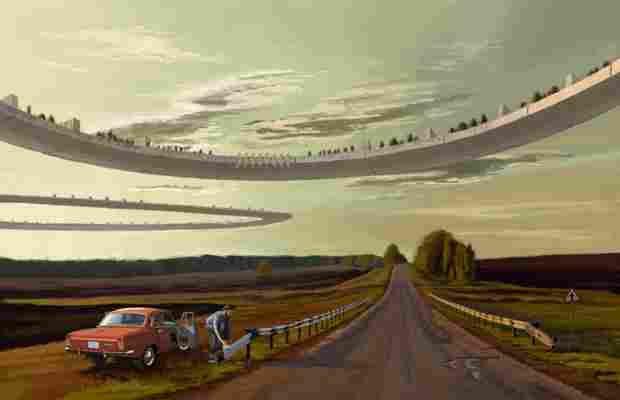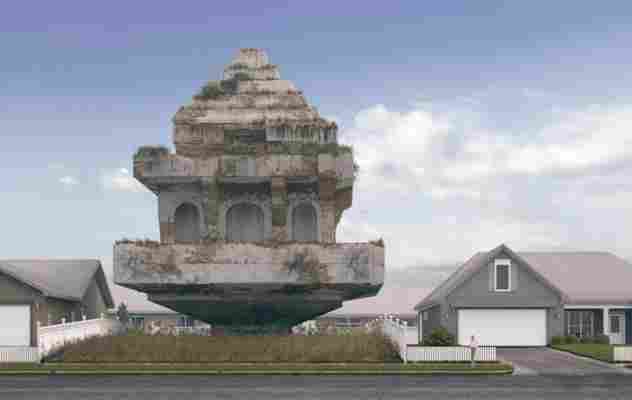A Futuristic Peek Into Architecture Through the World of Sci-Fi
The Fairy Tales competition challenges participants to imagine architecture as a storytelling medium, and the 2017 winners have impressive tales to tell. Created by Blank Space with the National Building Museum and the American Institute of Architecture Students (AIAS), the architecture competition is among the world’s largest, with a jury of more than 20 leaders in architecture and design, including such figures as Marion Weiss and Michel Rojkind . The judges considered entries from more than 60 countries to recognize the best in immersive world-building.
This year’s first prize was awarded to Ukrainian architect Mykhailo Ponomarenko for his submission, Last Day. Evoking traditional landscape paintings, his images juxtapose ordinary vacation moments with epic sci-fi megastructures, conjuring an awe-inspiring yet realistic alternate world.

A rendering by Mykhailo Ponomarenko of his award-winning design.
Second prize went to Terrence Hector for his piece, City Walkers, or the Possibility of a Forgotten Domestication and Biological Industry. The Chicago-based architect conceived a living form of architecture that exists alongside humanity but within a far longer time frame.
French architects Ariane Merle d’Aubigné and Jean Maleyrat took third prize with Up Above, a timely exploration of refugees living in structures built on high stilts, far removed from the dangerous world below.

Aidan Doyle and Sarah Wan's design, Course of Empire.
In addition to ten honorable mentions, the competition awards the AIAS Prize to the best entry from an AIAS member. This year’s went to architects Maria Syed and Adriana Davis for their submission, Playing House, which, they explain, “embodies the idea that architecture can eclipse the personality of its occupants.”
All the winning entries share a balance of fantasy and realism that captivates the imagination. According to Chase W. Rynd, executive director of the National Building Museum and a jury member for the contest, “The winning entries in this year’s competition . . . are so wildly outlandish and yet so grounded that it seems like we could mistakenly stumble into any of them.”